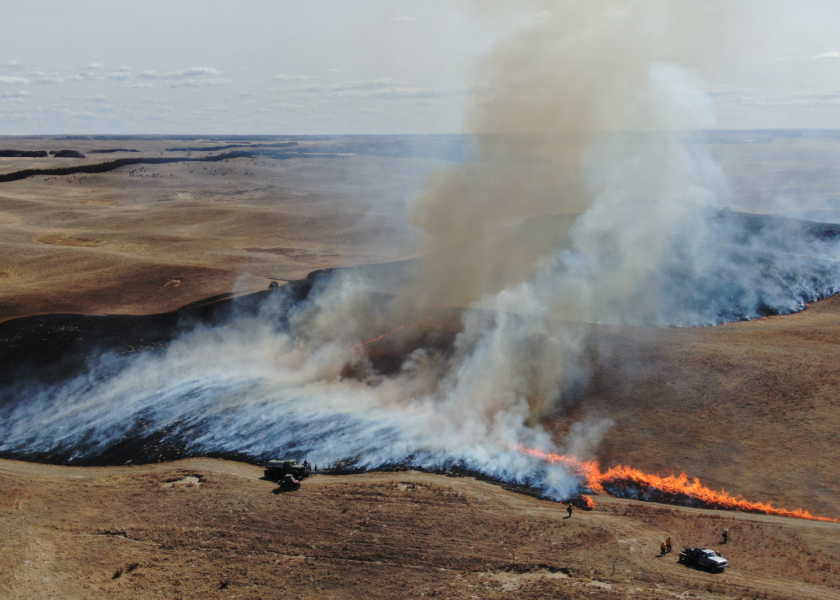Stocking Rates, Weed Management and Fire Break Recovery Following Wildfire

Q: Should I adjust stocking rates for my burned pasture/rangeland?
A: Rainfall in May and June will be most critical and should be the guiding factor affecting stocking rate decisions. With adequate rainfall, adjustments to stocking rate are not necessary. Research from the Great Plains shows that dormant-season fires do not reduce above-ground herbaceous production. In fact, plant regrowth following fire is considerably higher in quality which could lead to increased animal performance.
If the entire pasture was burned and drought conditions persist, stocking rate should be reduced. In this case, drought impacts are more important than the wildfire. The UNL Drought Management Planning page provides a variety of helpful resources for drought management in rangelands.
If only a portion of the pasture/rangeland was burned, it’s not necessary to fence off the area and graze it as a separate pasture. After fire, livestock will preferentially graze burned areas due to the higher quality of forage regrowth. With heavy grazing pressure in burned portions of a pasture, an abundance of forbs (broadleaf herbaceous plants) can be expected for several years following the fire. These forbs contribute to wildlife habitat and have some forage value as well.
Q: What should I do about invasive and problematic woody plants after the fire?
A: Woody plant encroachment is one of the greatest threats facing grasslands in the Great Plains, and wildfires can result in major reductions in the abundance of invasive and problematic woody plants like eastern redcedar. Best practices after the fire are to quickly remove invasive and problematic trees that remain alive and to manage reestablishing seedlings over the next several years to prevent them from becoming new seed-bearing trees. These practices minimize your rangeland’s exposure to seed dispersal and reduce encroachment problems in future years. In the southern Great Plains, these practices are used after wildfires to reduce woody encroachment in areas that would have otherwise been extremely expensive to restore using mechanical methods alone.
In addition, managing eastern redcedar after wildfire prevents the accumulation of highly volatile woody fuels in rangelands and thereby reduces the risk of damaging wildfires in future years. A team at UNL analyzed spot-fire distance, a critical metric for wildfire danger, as grasslands become encroached by eastern redcedar and found up to a 10-fold increase in spot-fire distance as grasslands transition to redcedar woodlands. Prescribed fires carry a much lower potential for spot-fire distances compared to wildfires and can be used to prevent and reduce the build-up of volatile woody fuels in rangelands.
Additional information can be found in a new extension guide developed by UNL scientists for reducing woody encroachment. For information on programs that support tree removal, contact your local NRCS office.
Q: What should I do with the pasture areas that were disked to create a fire break?
A: Ideally, these areas should be reseeded using the same grass species found in the rest of the pasture. If this cannot be done by the end of May, a summer annual forage crop could be planted as a cover, and then plan for reseeding the perennial grasses next spring. These should be the only areas where reseeding is considered. Monitoring for noxious weeds and non-native plants in these areas will also help reduce problems in future years.
Q: Will there be an increase in weeds in the pasture that burned?
A: It is not uncommon to see a greater number of annual weeds show up in a pasture after a fire. While this may look concerning, these weeds benefit wildlife and have some forage value or will turn into residue and cover at the end of the season. Their numbers will decline the following year.







